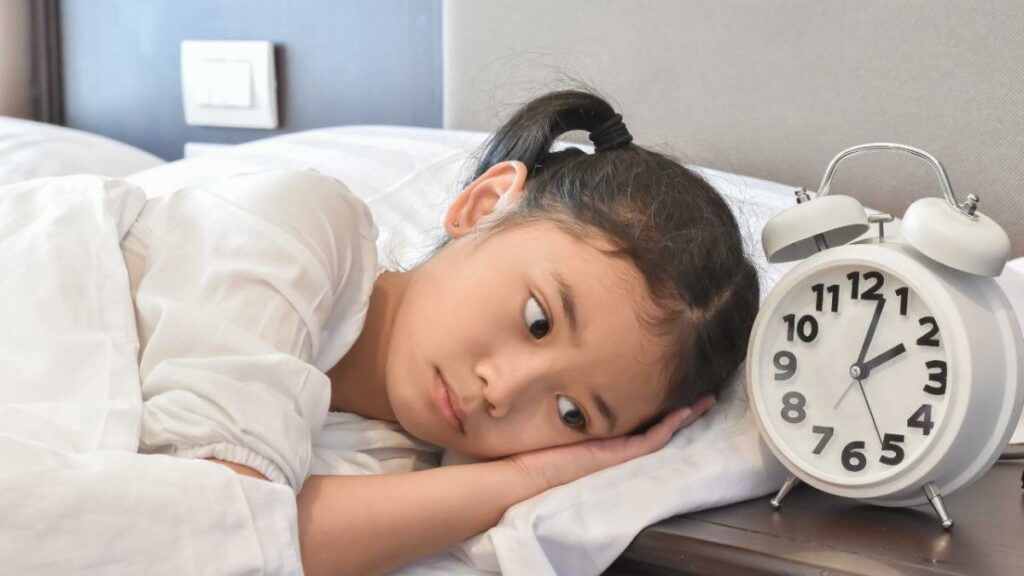Children’s sleep disorders are more common than many parents realise. If your child appears tired all the time and finds it difficult to sleep, he or she may have a sleep disorder. As a parent, you must address this issue and ensure that they receive proper treatment. If not, sleep disorders can cause a variety of physical and mental health problems, affecting your child’s growth and overall well-being.
Sleep disorders are a group of conditions that impair your child’s ability to sleep well regularly. Sleep disorders can affect even infants. Poor sleep quality in children has been linked to a variety of other conditions, including academic, behavioural, developmental, social, and medical conditions such as obesity, according to research. It not only impacts the child’s health, but it can also impact the family’s and parents’ or siblings’ sleep.
Furthermore, some studies have found that sleep-deprived children have more depressive symptoms and anxiety disorders than other children their age.
It’s difficult for any parent to learn that their child has a sleep disorder. After all, no parent wants to see their child struggle to fall or stay asleep through the night. Recent studies, however, estimate that nearly 30% of children will suffer from a sleep disorder at some point in their lives.
Understanding Sleep Disorders in Children
Discovering that your child may be struggling with a sleep disorder is undoubtedly challenging. No parent wishes to witness their child battling to fall or stay asleep. However, recent studies estimate that approximately 30% of children may encounter a sleep disorder at some point in their lives.
Types of Sleep Disorders in Children
- Insomnia: A challenge that can manifest from infancy through adolescence, causing difficulty in sustained sleep throughout the night.
- Sleep Apnea: Obstructive sleep apnea involves shortness of breath during sleep due to airway blockage, with different types presenting various challenges.
- Restless Legs Syndrome (RLS): This sleep movement disorder sees children exhibiting leg movement as they drift into slumber.
- Narcolepsy: An unconventional sleep condition marked by extreme daytime sleepiness rather than at night.
- Parasomnia: This class of sleep disorders introduces abnormal physical events during sleep, including sleepwalking, night terrors, and rhythmic movement disorders.
Recognizing Signs and Seeking Help
While the severity of sleep disorders may vary, the majority are treatable. The pivotal factor is for parents to recognize signs early on and seek treatment for the underlying causes rather than merely addressing the symptoms.
A Child’s Sleep Needs
Understanding your child’s optimal sleep duration at different stages of their growth is crucial.
| S.No | Years | Sleeping Hours |
|---|---|---|
| 1 | 0-4 months | Newborns sleep approximately 16-17 hours a day |
| 2 | 4 months-1 year | Babies of this age require between 14-15 hours of sleep every day |
| 3 | 1-3 years | Most toddlers need about 12-14 hours of sleep |
| 4 | 3-6 years | Approximately 11-12 hours of sleep |
| 5 | 7-12 years | Children of these age groups tend to need about 10-12 hours |
| 6 | 13-18 years | Teens of this age require about 8-10 hours of sleep |
These figures may vary slightly based on individual circumstances, but prolonged deviations should prompt action. Untreated sleep disorders not only result in tired and irritable children but also contribute to behavioural challenges at home, school, and in social circles.
Tackling Sleep Troubles: A Parent’s Role in Management
As children embark on their educational journey, sleep disorders become more prevalent. Research links sleep issues in children to poor academic performance in subjects like math and science, coupled with behavioural difficulties. However, with proper diagnostic evaluation, these disorders can be effectively managed.
Root Causes of Sleep Disorders in Children
Identifying the triggers for sleep disorders in children is crucial. From environmental factors to underlying mental health issues such as depression, numerous factors could contribute. Consulting with experts for a comprehensive diagnosis helps pinpoint the root causes, paving the way for tailored treatment procedures.
Recognizing Signs of Sleep Pattern Changes
As a vigilant parent, staying attuned to signs of alterations in your child’s sleep patterns is essential. Look out for:
- Snoring
- Difficulty falling asleep
- Problems sleeping through the night
- Daytime sleepiness
- Decreased daytime performance
- Unusual sleep events (walking, nightmares)
- Teeth grinding
- Bedwetting
- Restless sleep
- Breathing issues during sleep
- Morning wake-up troubles
Discovering that your child may be struggling with a sleep disorder is undoubtedly challenging. No parent wishes to witness their child battling to fall or stay asleep. However, recent studies estimate that approximately 30% of children may encounter a sleep disorder at some point in their lives.
Conclusion
Managing sleep disorders in children requires proactive efforts from parents. You can significantly improve your child’s sleep quality by understanding the signs, implementing a consistent bedtime routine, and making small lifestyle changes.
Frequently Asked Questions (FAQs)
- Q: Can sleep disorders in children affect their academic performance?
- A: Yes, studies show a correlation between sleep issues and poor academic performance in children.
- Q: What role does nutrition play in promoting quality sleep for children?
- A: Nutrition influences sleep; avoiding caffeine and large meals close to bedtime can improve sleep.
- Q: How important is a consistent bedtime routine for children?
- A: A consistent bedtime routine helps children adjust to a sleep schedule, promoting better sleep quality.
- Q: Are there relaxation techniques that can help children before bedtime?
- A: Yes, activities like a warm bath or reading a bedtime story can help children relax before sleep.
- Q: Can changes in the sleep environment positively impact a child’s sleep?
- A: Yes, factors like temperature, darkness, and noise levels contribute to creating an ideal sleep environment.
Investing time and effort into understanding and addressing sleep disorders in children can lead to positive outcomes, fostering their overall health and well-being.
